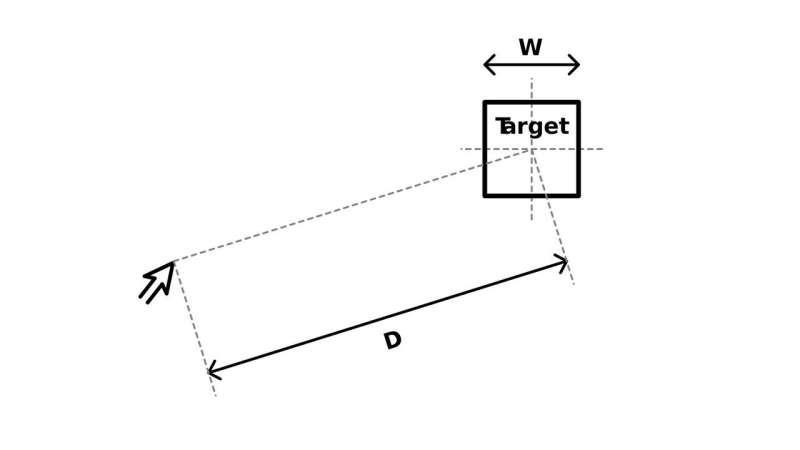Updating a law that shapes your tech

While you may not think about how the buttons and icons on your computer screen were designed, there's a lot of thought behind it. Designers had to consider not only what would be aesthetically pleasing, but what would be functional, easily understood and capable of helping you use the technology.
And one of the fundamental laws that helps dictate this sort of design decision just got an update.
At issue is Fitts's Law, which effectively predicts the amount of time it takes someone to reach a target. For example, how long it would take you to click on an icon, push a button, or reach for a glass of water. Basically, Fitts's Law holds that the closer a target is, the more quickly you can reach it. Fitts's Law also holds that the larger a target is, the more quickly you can reach it.
Specifically, Fitts's Law says that the larger an object is in the direction of your movement, the quicker you can reach it. So, for example, if you are reaching for a pencil, Fitts's Law states that you should be able to reach it more quickly if the eraser is pointing toward you (or if the pointy end is pointing toward you) than if you are facing the side of the pencil.
Just to make things confusing, the direction of your movement is always termed "width." In other words, if the pointy end of a pencil is pointing toward you, and you reach for the pencil, Fitts's Law would say that the pencil's "width" is the distance from the pointy end to the eraser.
This is a widely studied phenomenon and is used by designers to develop all sorts of user interface features like, well, the buttons and icons on your computer screen. In other words, while you probably haven't heard of it, it has played a role in shaping many of the devices you use on a daily basis.
"However, a recent study finds that Fitts's Law needs to account for both dimensions of the target object," says Doug Gillan, a professor of psychology at NC State and the researcher who ran the aforementioned study.
In other words, Gillan's research shows that Fitts's Law needs to include the dimensions of the target that are perpendicular to your movement, not just the dimensions of the object that are parallel to your movement.
"For example, if a pencil and a magic marker are exactly the same length, but the magic marker is broader, you could reach the magic marker more quickly—assuming they're both pointing in the same direction," Gillan says.
A paper on the new findings, "Both Sides Now: Both Height and Width of the Target Matter for Applying Fitts's Law to Pointing Using a Mouse," will be presented by Gillan at the Human Factors and Ergonomics Society's International Annual Meeting, being held Oct. 28-Nov. 1 in Seattle.



















